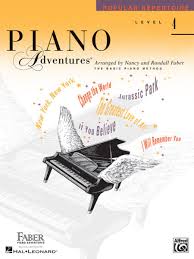Table of Contents
Come join us now, and enjoy playing your beloved music and browse through great scores of every level and styles!
Can’t find the songbook you’re looking for? Please, email us at: sheetmusiclibrarypdf@gmail.com We’d like to help you!
Brahms Piano Concerto No. 2 3rd Mov arr. for 2 pianos sheet music, Noten, spartiti, partition, 楽譜
Best Sheet Music download from our Library.

Please, subscribe to our Library.
If you are already a subscriber, please, check our NEW SCORES’ page every month for new sheet music. THANK YOU!

Browse in the Library:
Or browse in the categories menus & download the Library Catalog PDF:

Johannes Brahms: The Colossus of Musical Integrity – An Exhaustive Examination of His Importance
Johannes Brahms (1833-1897) stands not merely as a great composer, but as a pivotal force, a bridge between eras, and a beacon of artistic integrity whose influence permeates Western classical music to its core. His importance transcends the sheer beauty and emotional depth of his output; it lies in his unique historical position, his uncompromising artistic vision, his profound synthesis of tradition and innovation, and the enduring intellectual and emotional resonance of his work.
I. The Historical Crucible: Brahms as the Keeper of the Flame
Brahms emerged during a period of profound upheaval in music – the high Romantic era, dominated by the “New German School” led by Franz Liszt and Richard Wagner. Their philosophy championed program music (music depicting extra-musical ideas, stories, or images) and the Gesamtkunstwerk (total work of art), emphasizing emotional extravagance, literary association, and revolutionary harmonic exploration. The colossal shadow of Beethoven also loomed, seemingly having exhausted the possibilities of traditional forms like the symphony.
- The “War of the Romantics”: Brahms, supported by the influential critic Eduard Hanslick (who championed absolute music – music for its own sake), became the figurehead of the opposing camp. He was perceived, and often willingly positioned himself, as the guardian of classical traditions – the symphonic structure, sonata form, counterpoint, and abstract musical logic – inherited from Bach, Mozart, Haydn, and especially Beethoven.
- The Weight of Expectation: The pressure on Brahms to write a symphony, following Beethoven, was immense. His meticulousness and reverence for the form led him to wait until his 40s to publish his First Symphony, instantly dubbed “Beethoven’s Tenth” due to its powerful culmination. This delay itself speaks volumes about his profound respect for the tradition he felt responsible for upholding.
Brahms’s importance here is twofold:
- He preserved and revitalized tradition: In an age rushing towards the future, Brahms demonstrated that classical forms were not exhausted. He proved they could still carry profound, deeply Romantic expression without needing literary crutches or revolutionary dismantling.
- He provided a crucial counterbalance: His success ensured the continued vitality and development of absolute music, preventing programmatic ideals from becoming an unquestioned orthodoxy. This dialectic between the Brahmsian and Wagnerian paths fueled musical development for decades.
II. The Synthesis: Tradition Forged Anew with Romantic Soul
Brahms was never a mere imitator or reactionary. His genius lay in his sublime synthesis:
- Classical Architecture, Romantic Content: He employed sonata form, variation form, fugue, and intricate counterpoint with the rigour of a master craftsman. Yet, within these structures, he poured an intensely Romantic sensibility: rich, autumnal harmonies (using complex chromaticism and modal inflections), soaring melodies often imbued with profound melancholy or noble warmth, and textures of unparalleled density and warmth.
- Developing Variation: Perhaps his most significant technical contribution. Brahms rarely repeated material exactly. Instead, he employed constant, organic transformation – subtly altering a motif’s rhythm, harmony, interval, or texture throughout a movement or entire work. This created a sense of relentless, logical evolution and profound unity, where every note felt organically connected. Schoenberg later hailed this technique as foundational to modern musical thought.
- Master of Ambiguity and Depth: Brahms’s music thrives on subtlety, ambiguity, and layered meaning. Rhythmic complexities (syncopation, hemiola – superimposing duple and triple rhythms), harmonic richness that often obscures the tonic, and contrapuntal intricacy create a depth that rewards repeated listening. There’s always more to discover beneath the surface.
- Chamber Music Pinnacle: Brahms elevated chamber music to unprecedented heights of complexity and emotional scope. His string quartets, piano quartets and quintet, clarinet quintet, and violin sonatas are cornerstones of the repertoire, renowned for their intricate interplay, conversational depth, and perfect balance between instruments. He treated each ensemble with symphonic ambition and intimacy.
- Symphonic Legacy: His four symphonies are titans of the repertoire:
- No. 1: A monumental struggle culminating in triumphant affirmation.
- No. 2: Lyrical, pastoral, and comparatively serene (though no less profound).
- No. 3: Dramatic and concise, featuring one of his most famous melodies.
- No. 4: A tragic masterpiece culminating in a monumental passacaglia (variations over a ground bass), a stunning display of Baroque form infused with Romantic intensity.
- Vocal Music: From Lieder to Requiem: His lieder (art songs), like the Vier ernste Gesänge (Four Serious Songs), explore profound existential themes with unmatched depth and economy. The Ein deutsches Requiem (A German Requiem), using texts he selected from Luther’s Bible, stands apart from traditional liturgical requiems. It focuses on comfort for the living rather than fear of judgment for the dead, achieving a universal humanism through music of unparalleled nobility and consolation. His choral works (like Schicksalslied, Nänie) are equally significant.
- Piano Works: From the youthful, passionate sonatas to the introspective, complex late intermezzos and capriccios, his solo piano music is a vast continent of technical and expressive range, often demanding both virtuosity and profound musical understanding.
III. The Legacy: Foundations for the Future
Brahms’s influence was immediate and long-lasting:
- Direct Heirs: Composers like Max Reger, Ferruccio Busoni, and the young Richard Strauss (before his later style) directly absorbed his complex harmony, counterpoint, and formal rigor.
- Viennese School Bridge: Arnold Schoenberg, despite leading the atonal revolution, revered Brahms. He saw in Brahms’s “developing variation” and dense motivic working the seeds of modern musical continuity. Alban Berg and Anton Webern also deeply respected Brahmsian craftsmanship. Schoenberg’s famous essay “Brahms the Progressive” argued forcefully for his forward-looking techniques.
- 20th Century Neo-Classicism: During the reaction against late Romantic excess, composers like Paul Hindemith and even Igor Stravinsky found inspiration in Brahms’s emphasis on structure, counterpoint, and clarity of form – though often filtered through a more austere lens.
- Enduring Performance Standard: Brahms’s demanding music, requiring both technical mastery and deep musical intelligence, sets a benchmark for performers. His intricate textures demand perfect balance and ensemble; his emotional depth requires profound interpretative insight.
IV. The Enduring Resonance: Why Brahms Matters Today
Beyond historical significance and technical mastery, Brahms’s importance endures because his music speaks universally and profoundly to the human condition:
- Depth of Feeling: He expresses a vast emotional range – autumnal nostalgia, noble heroism, profound tenderness, devastating tragedy, serene acceptance, and consoling warmth – often simultaneously. His melancholy is never sentimental; his joy is never superficial.
- Intellectual Satisfaction: The intricate craftsmanship, the logical development, the sense of everything being in its right place, provides immense intellectual satisfaction. Discovering the inner workings of a Brahms symphony or quartet is a deeply rewarding experience.
- Structural Grandeur & Intimate Lyricism: He achieved the seemingly impossible: composing works of immense structural power and scope (symphonies, requiem) alongside pieces of exquisite, intimate lyricism (intermezzos, lieder).
- Humanism and Consolation: Works like the German Requiem offer solace not through dogma, but through shared humanity and musical transcendence. His music often embodies a struggle towards resolution and peace, reflecting a deeply human journey.
- Timeless Craftsmanship: In an era of rapid stylistic change, Brahms’s unwavering commitment to musical substance, structural integrity, and expressive honesty remains a powerful model. His music transcends fashion.
Johannes Brahms: The Indispensable Titan
Johannes Brahms was the composer who proved tradition could be a living, breathing force for profound Romantic expression. He stood against the tide not out of conservatism, but out of a deep conviction in the enduring power of musical logic and abstract beauty. Through his unparalleled synthesis of classical discipline and Romantic passion, his development of revolutionary techniques like “developing variation,” and his creation of works of unsurpassed emotional depth and intellectual rigor, he shaped the course of music history. He provided the essential counterweight to Wagnerian expansion, influenced generations from the late Romantics to the Second Viennese School, and established a standard of craftsmanship and integrity that remains aspirational. To listen to Brahms is to engage with music at its most structurally satisfying, emotionally complex, and fundamentally human. He is not just important; he is indispensable to understanding the heart, mind, and evolution of Western classical music. His music remains a testament to the enduring power of intellect and emotion forged into an art of timeless significance.
Browse in the Library:
Or browse in the categories menus & download the Library Catalog PDF:
